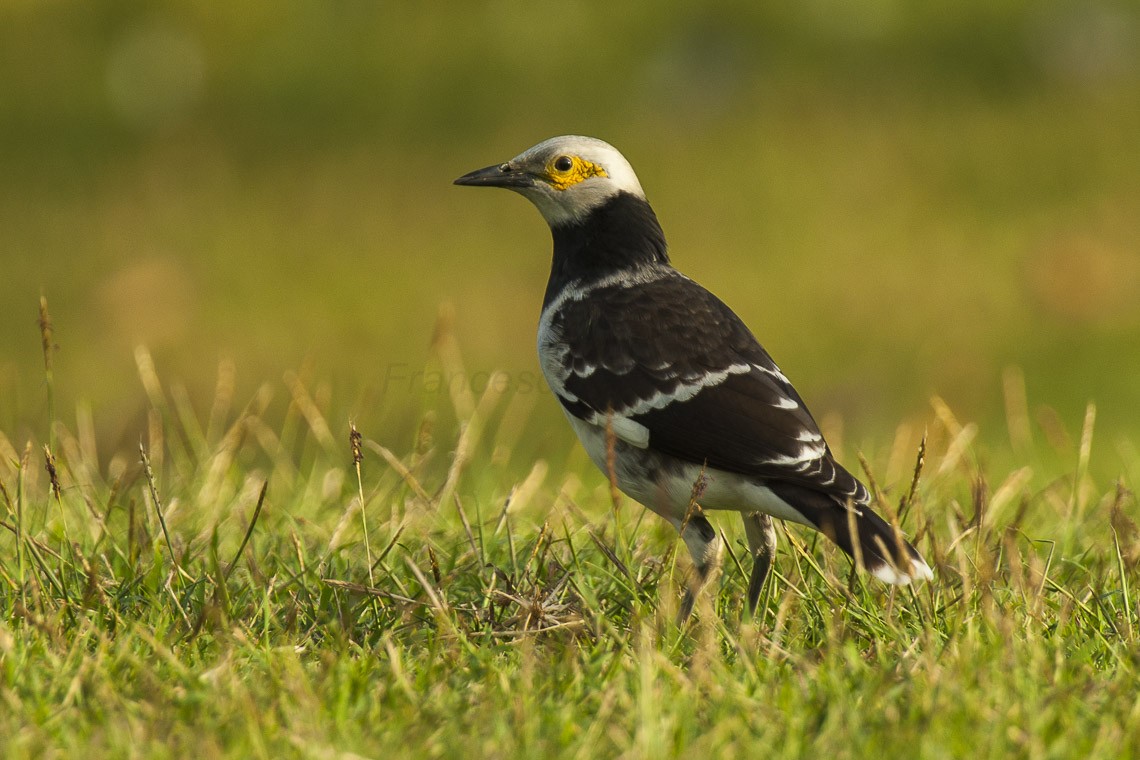Black-collared Starling
A species of Asian Pied and Black-collared Starlings Scientific name : Gracupica nigricollis Genus : Asian Pied and Black-collared Starlings
Black-collared Starling, A species of Asian Pied and Black-collared Starlings
Botanical name: Gracupica nigricollis
Genus: Asian Pied and Black-collared Starlings
Content
Description People often ask General Info
 Photo By Francesco Veronesi , used under CC-BY-SA-2.0 /Cropped and compressed from original
Photo By Francesco Veronesi , used under CC-BY-SA-2.0 /Cropped and compressed from original Description
The black-collared Starling is a large and unmistakable black-and-white bird with yellow skin around its eyes. It is well-known for its melodic song that it often sings from atop a tall street lamp or utility wire. The black-collared Starling builds a beautiful domed nest out of twigs, feathers, grass, and flowers, and oftentimes re-uses it.
Size
28 cm
Nest Placement
Tree
Feeding Habits
Black-collared Starling primarily feed on insects, earthworms, and seeds, showcasing varied dietary habits. They are known for active foraging, utilizing unique adaptations to seek food. Black-collared Starling's preference for a mixed diet is distinctive, reflecting their opportunistic feeding behaviors.
Habitat
Black-collared Starling thrives in an array of open habitats, which range from grasslands and cultivated fields to dry forests and human-influenced environments such as settlements and lawns. These birds are versatile dwellers of the lowlands but are also found at higher elevations up to 2,000 meters. Their preference for open areas extends to landscapes like rice stubble, indicating adaptability to agricultural landscapes.
Dite type
Omnivorous
General Info
Feeding Habits
Bird food type
Behavior
Two courtship displays have been recorded. One consists of a pair facing each other, their feathers ruffled and beaks open. In the other, the pair droop their wings and bow their heads. Between displays, the pair run or fly after each other. Pairs also preen each other, a behaviour known as allopreening. The breeding season has been recorded as February to May in Thailand, March to July in China, and April to August in Burma. 
Distribution Area
This species is found in southern China from Fujian to Yunnan, and south to Burma, Laos, Cambodia, Vietnam and Thailand. An individual recorded in Brunei may be an escaped captive or a vagrant. It has been introduced to Taiwan, Malaysia and Singapore. 
Species Status
Not globally threatened.